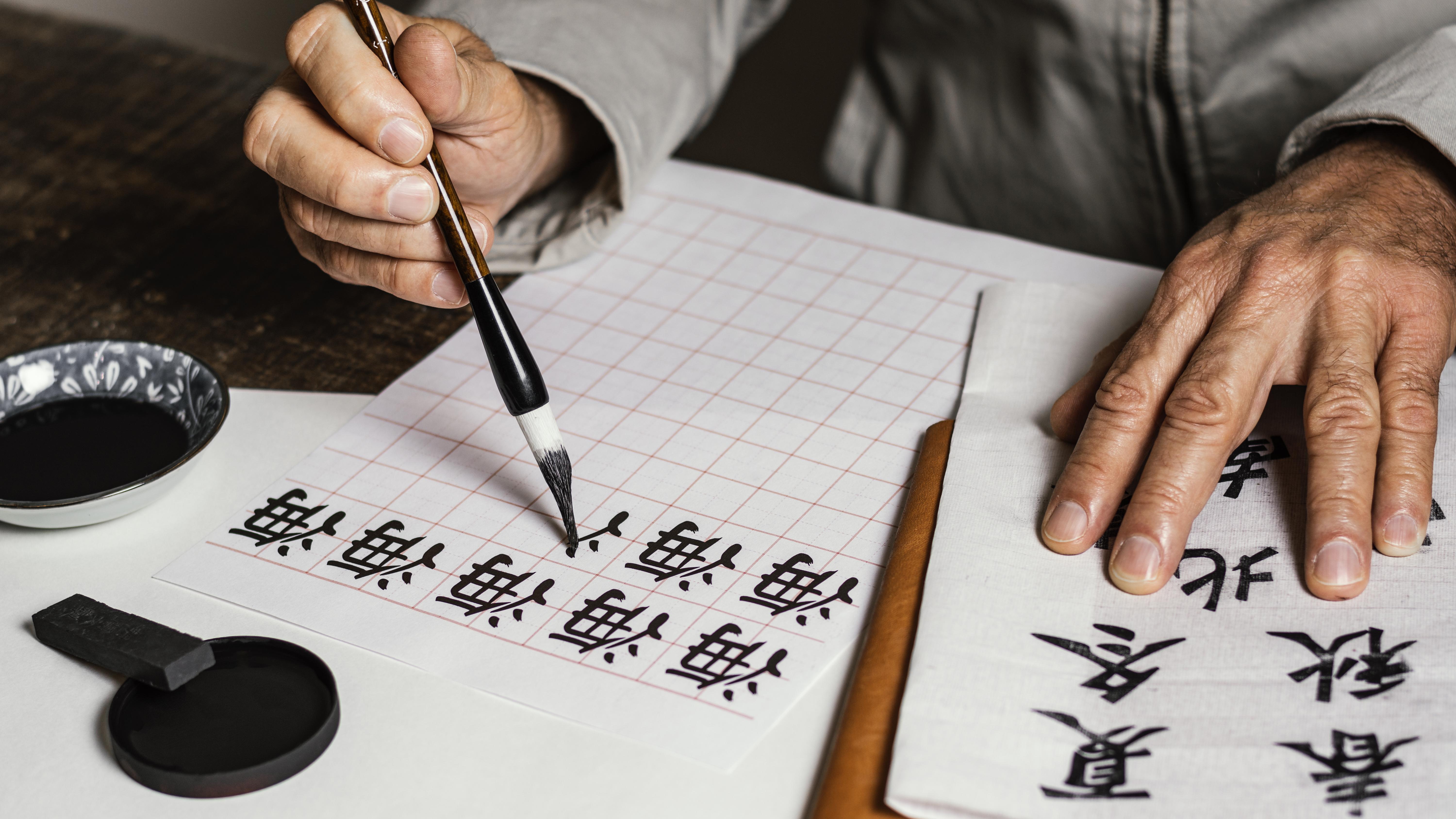
3 Things You Wish You Knew about Hanzi
Anne is a teenager who’s obsessed with Chinese culture and interested in watching C-drama. She’s learning Chinese by herself at home and she has a hard time dealing with Hanzi.
Her brother John is a soon-to-be exchange student in Shanghai. He has enrolled in a Chinese class in a language center. He can speak fluent, basic daily conversation but struggles with learning Hanzi.
Their aunt Marie has been working for Alibaba, a Chinese retail giant, for three years. She learned Chinese through an online app and advanced to intermediate level. However, writing emails in Chinese is still a challenge for her because Hanzi is her weak point.
These three people share different stories about their connections with China and Chinese language. And all are struggling with only one problem: Hanzi.
Hanzi, or Chinese characters, are completely different from English letters. Jumping right into learning a whole different writing system without learning about the system itself may cost you lots of time and effort.
In this article, we’ll give you the big picture of Hanzi, including its history, the formation of the characters, and the difference between traditional and simplified Chinese. With a good grasp of Hanzi you can become a more effective learner.
The history of Hanzi
The Chinese language boasts one of the world’s oldest continuous languages, and its writing system is included in that long legacy. Chinese scripts have been found in turtle shells dating back to the Shang dynasty, proving the written language existed over 3,000 years ago.
Literally translated, Hanzi means “the Chinese characters”. “Han” was named after the Han-Chinese ethic, and “zi” means characters. The word Hanzi itself carries a stronger bond with Chinese history than anyone could imagine.
It wasn’t until the Han imperial dynasty that Chinese characters were called Hanzi. The Han dynasty is one of the most successful imperial dynasties in China’s history. The Han dynasty brought an end to the chaos due to the fall of the Qin dynasty and united all the parts of the country together. Under the rule of Han emperors the country witnessed a period of stability and growth. China during that period was considered equal to any of the other giant states of the ancient world, such as the Roman, Persian, and Mauryan empires. Modern Chinese proudly call themselves “the Han” to show great respect to this ancient dynasty.
How Hanzi were formed
Hanzi represent words using different strategies. A few characters were originally pictograms which depict a representational symbol to communicate a word or phrase. Other characters are ideograms, which are similar to pictograms because they communicate an idea as a symbol. Others fall into the group of radical compounds. However the majority of Chinese characters developed using the rebus principle, which is a principle in which a new word is represented by using existing pictographs purely for their sound instead of their meaning. The rebus principle was used to represent abstract words, which otherwise would be hard to represent with pictograms.
Pictograms
A pictogram, also called a pictograph, is the most simple and efficient way to convey a message or an idea using representational or pictorial drawings. Pictograms have been used throughout civilization – from the prehistoric age to ancient time, until today. Ancient Egyptian and Chinese civilizations used pictograms to form their early writing systems.
Pictograms have been standardized and simplified through time to make them easier to write. Pictogram Hanzi give you an illustration of the word, thus it’s easy to memorize . Examples of pictograms include 日 rì “sun” or 月 yue “moon.”
Ideograms
An ideogram character is formed by using a symbol to represent the idea of a thing without indicating the sounds to say it. In math, there are ideograms that we use in everyday calculations. The ideogram for plus is ‘+‘, the ideogram for equal is’ =‘, and so on.In languages, there are some that we often use, such as & for ‘and’ @ for ‘at,’ etc.
In Chinese language, Hanzi that fall into this category are also called simple indicatives.
Ideogram Hanzi or simple indicatives exemplify the idea of the word clearly so everyone can easily get the meaning of the word. Examples of ideograms include 上 shàng “up” and 下 xià “down” (which were originally drawn as a dot above and below a line).
Radical compounds
Radical characters are characters that carry a meaning themselves and can stand as a full-meaning character. A radical character often serves as a semantic indicator in radical compounds.
Chinese radicals are somewhat similar to prefixes and suffixes in English. Instead of creating thousands of new characters, Chinese people pair a radical with another component to form a radical compound character. When a radical is placed next to a component, it’ll add more context to the whole character.
Examples of radical compounds are 看 kàn “to see” (with the radical 目 mù “eye”), 吃 chī “to eat” (with the radical 口 kǒu “mouth”).
There are two things that make Chinese radicals more special than any prefixes or suffixes in English. First of all, Chinese radicals can appear in any position in a character, left and right, top and bottom. Unlike Chinese radicals, English prefixes and suffixes only appear either at the beginning or the end of the word. Examples are the radical 女 and some of its radical compounds: 姐, 好 and 妾.
Secondly, radicals can be written in full form or be distorted and changed to fit into a block with other components. Once they’re distorted and changed, they may have fewer strokes and different shapes. Examples are radical 刀 dāo “knife” will change to刂 in 刖 yuè “to cut off” or 人 rén “man” will change to 亻in 他 tā “he.”
Radical-radical compounds
Radical-radical compounds are also known as associative idea characters. These characters, which contain two or more unrelated radicals, suggest a third meaning.
For example, 休 xiū “rest” is composed of 人 rén “man” and 木 mù “tree,” with the intended idea of someone leaning against a tree for a rest. 明 míng “bright” is the association of the two brightest objects in the sky, 日 rì “sun” and 月 yuè “moon,” brought together to express the idea of “bright.”
The rebus principle
The word ‘rebus’ has its origin from the Latin expression ‘Non verbis, sed rebus’ (Not by words, but by things), meaning to rely on things rather than words to express ideas.
Rebus uses existing symbols, such as pictograms, to represent new words purely for their sounds instead of their meanings. Many ancient writing systems used the rebus principle to represent abstract words, which otherwise would be hard to represent with pictograms.
The Chinese writing system is no exception. Thanks to the rebus principle, many new characters were created based on their similar sounds with other characters. However, many characters lost their original meaning to the phonetic-loan characters through time because the latter were more popular. Original characters were then devised by adding more components. If you ever encounter two characters with identical components and similar pronunciation, they’re probably characters formed using the rebus principle.
An example is the character 來 lái was originally a pictogram of a wheat plant. As this was pronounced similar to the Old Chinese word “to come,” 來 was also used to write this verb. Eventually, the more common usage, the verb “to come,” became established as the default reading of the character 來, and a new character 麥 was devised for “wheat.”
Another example is the character 北 běi which originally means the back of the body. Later, it was used to mean “north” and lost its original meaning. As a result, a new character 背 was devised for “the back of the body.”
Traditional vs. Simplified Chinese
Many learners who study Chinese as a second language are confused about traditional and simplified Chinese. They don’t know the difference between the two and which one they should study. Let’s see how these two are different from each other in terms of their history, how they look, and where they are used.
Traditional Chinese characters
Traditional Chinese was originally the standard in all Chinese-speaking regions. They are characters which have been created and evolved with Chinese history.
Traditional characters are typically more complicated and have more strokes than simplified Chinese. Today, traditional Chinese characters are used in Hong Kong, Taiwan, and Macau. There are two officially recognized varieties: Traditional Chinese for Hong Kong SAR and Traditional Chinese for Taiwan.
Simplified Chinese characters
Simplified Chinese are characters created during the Chinese Character Simplification Scheme, the language reforms executed by the government of the People’s Republic of China in the 50s and 60s. When the new Chinese government was established in 1949, the literacy rate in China was as low as 20%. Believing the learning of traditional Chinese characters to be a factor, the government launched a campaign to promote literacy and education by simplifying the writing system.
There were approximately 2,000 common traditional characters that were affected and modified by the reforms. Stroke reduction was one of the significant changes. Simplified characters are more convenient than traditional ones with fewer strokes and less complicated writing.
Today, simplified characters are used in mainland China and other Chinese-speaking countries such as Singapore and Malaysia.
Final thought
Learning Hanzi is challenging for any learner because you have to become familiar with the stroke order, the component meaning, and the formation of each character. Also, you have to make a choice between studying traditional Hanzi or simplified Hanzi. With the information provided in this article, we hope you can learn Hanzi more effectively.
If you need a tool to help you through your learning journey and provide metrics to calculate your progress, check out Pandanese. Pandanese is committed to helping learners learn more than 6,000 Hanzi in a single year.
The easiest way to learn Chinese & build vocabulary

